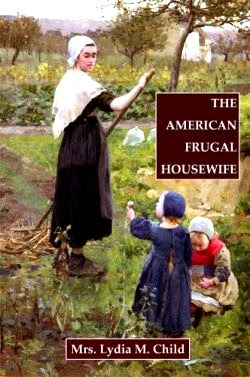Bread making is much easier than when I first learned to make it; in my mother's kitchen, with "cake" yeast, 5 loaves at a time in a big, old bread mixing pan. I have tried all the newer methods as they were developed – cool-rise, mixing some of the mixture in an electric mixer, bread machines, etc. My husband often brought home buddies for coffeetime on my baking days. We never, ever buy bread - there are so many good breads to make.
Today, we can quickly make bread from scratch with either a food processor or a large electric mixer – it’s efficient, quick but still satisfying to show off that fragrant loaf of bread, buns or sweet breads and rolls. If you have room for a machine that usually only makes bread, use it to make your dough and shape it and finish it in your oven. Here are some of the things I do now - I convert all recipes I try to use these methods.
Instant Yeast –
• Just add it to the dry ingredients. No need to “proof” the yeast. Saves time rising too.
Instant yeast is almost twice as fast to rise as active dry yeast.
If you are using an old recipe, be sure to add the "proofing" liquid to the rest of the liquid called for.
• Try “instant yeast” or “rapid rise” yeast from Fleishmann’s, Red Star or SAF. I buy 1# bags of Fleishmann’s instant at a good price. Those little packages are EXPENSIVE unless you bake very seldom.
• Keep your yeast in the freezer except for a small, tightly sealed jar in the fridge.
Instant Read Thermometer –
• Use an instant read thermometer to check the temperature of the water you add to your dough.
• If you want to know if your bread loaf is done, use an instant read thermometer poked a little way into the end of the loaf. If it is over 190° your loaf is done.
Kitchen Scale –
• Use a kitchen scale for weighing ingredients – flour and shortening right into the bowl. Saves time and improves accuracy.
• Use the scale for weighing the dough for multiple loaves or buns, etc. They’ll bake in the same time.
Dough Rising and Shaping–
• Let your dough rise right in your food processor or mixing bowl. Saves washing an extra bowl.
• Don’t “punch” down your dough before shaping into loaves or rolls. Just roll it out to remove big bubbles, or knead gently a few times. Otherwise you remove too much of the “rise”.
• When shaping dough, be sure to pull it taut, to make a skin on it. This helps keep the dough’s shape.
Cooking Spray –
• Use just a little cooking spray on the kneading surface, hands and rolling pin (if needed). If this doesn’t work for you, use just a thin sprinkling of flour. Don’t add a lot of flour to your dough, it leaves streaks because it is too hard to knead in.
Covering and shaping your dough-
• If your mixer bowl doesn’t have a cover, top your dough with a plastic cover or plastic wrap. Forget about cloths over your dough, it lets it dry out. I purchased the plastic lids available for my Kitchenaid – very useful. In your food processor, just leave the lid on.
• Try a silicone baking mat or plastic cutting mat for handling your dough – it’s easier to clean and keeps dough from sticking.
• Cover your shaped dough with plastic wrap or waxed paper sprayed with cooking spray. Gently remove it before putting the dough in the oven. I have plastic covers for my bun pans, handy for rising.
• If you are making dough in loaf pans, let it rise so the center of the loaf is about 1” or so over the rim of the pan. If your oven is hot enough, it will rise some more in the oven – “oven spring”. If you let your loaf rise too high it may collapse in the oven.
Finishing and storing your bread –
• If you want a soft, shiny crust, brush you loaf with a little warm butter (not cold from the fridge).
• Don’t cut your bread until it is cold. Use a serrated bread knife or electric knife.
• Freeze your rolls or sliced bread after they are cold. Take out just the number of slices or rolls you need, let thaw, covered or reheat in the microwave.
Practice - Practice - Practice. You can become an expert home bread baker just like Grandma - and your family will love it. When I was a kid, we always knew which mom in the neighborhood was baking that day - we made sure we got there about the right time!
Check out our yeast bread recipes HERE and our yeast sweet rolls and coffeecakes HERE.
Check out our yeast bread recipes HERE and our yeast sweet rolls and coffeecakes HERE.



















After about ten years' absence from bread-baking I started again about a month ago, Sue. Most of my products have turned out well enough, but could be better.
ReplyDeleteAs I read this posting I realized how much I'd forgotten (thanks for reminders) and I think my breads and rolls will be of better quality in the future.
So glad I found your blog; shared your site on my Facebook page.
8 )
A question: do you have any specific suggestions when baking breads with wholegrain and multi-grain flours?
ReplyDeleteYes. Unless your family is used to them, I would suggest a recipe like the whole wheat bread recipe I will be posting Monday. You just need some unbleached bread flour along with the whole grain to satisfy the tastes of most folks.
ReplyDeleteArtisan breads with whole grains are another whole subject - then I would suggest this link from Mother Earth News.
http://www.motherearthnews.com/Real-Food/Artisan-Bread-In-Five-Minutes-A-Day.aspx?page=6
Wonderful! Thank you, Sue. I'll be watching for that recipe.
ReplyDeleteI don't think I mentioned that I inherited Mom's breadmaking machine--that's what got me back into baking bread--but the darned thing went kerflooey after the second time I used it. After deciding I didn't need the machine, anyway, I continued slogging along as best I could and turned out some pretty good wholegrain buns.
I AM interested in artisan breadmaking and will check out that Mother Earth News link you've offered (I'm a fan of Mother Earth News already, but haven't been there in awhile). Thank you for that link!
Hope you are keeping warm enough; sounds like we have a humdinger of a snowstorm heading our way.